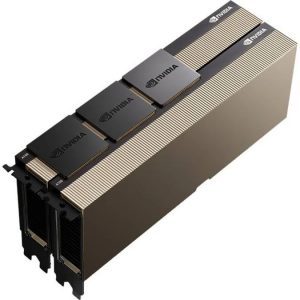
Upgrading memory is a common and effective way to boost the performance of your computer. Whether you’re a gamer looking to improve loading times or a professional needing to run resource-intensive software smoothly, understanding the process of upgrading memory is crucial. Here are four essential things to know before diving into the world of memory upgrades.
1. Understanding the Maximum Capacity of Existing RAM before Upgrading Memory
Before embarking on a memory upgrade journey, it’s vital to understand the maximum capacity of your existing RAM. Most computers have a limit to how much memory they can support, determined by factors such as the motherboard’s chipset and the operating system. To find out your current RAM capacity, you can check your computer’s specifications in the user manual or search online using the model number of your device. Here are two other options to get the maximum capacity: method 1 and mothed 2.
Once you know your current RAM capacity, you can determine how much additional memory you can add. Some computers may have spare slots for additional RAM modules, while others may require you to replace existing modules with higher-capacity ones. Understanding this limit is crucial to ensure you invest in the right amount of memory for your system without wasting resources or encountering compatibility issues.
2. Checking for Bottlenecks before Upgrading Your Memory
While adding more memory can improve overall system performance, it’s essential to identify any potential bottlenecks that may hinder the effectiveness of the upgrade. Bottlenecks can occur due to other components in your system, such as the CPU or storage drive, not being able to keep up with the increased memory capacity.
Before upgrading your memory, it’s a good idea to monitor your system’s performance using diagnostic tools or software utilities. Look for signs of high CPU usage, excessive disk activity, or frequent swapping of data between RAM and storage drives. If you notice any of these issues, addressing them before upgrading your memory can help ensure that you get the maximum benefit from the investment.
Additionally, consider factors such as the speed of your current RAM modules and whether upgrading to faster memory could provide a more significant performance boost than simply adding more capacity. Identifying and addressing potential bottlenecks beforehand will help you make informed decisions about your memory upgrade and ensure optimal system performance.
3. Checking the Compatibility of RAM
Compatibility is crucial when upgrading memory to ensure that the new modules work seamlessly with your existing hardware. Several factors determine RAM compatibility, including the type, speed, and capacity of the memory modules.
Firstly, identify the type of RAM your system supports. Common types include DDR3, DDR4, and DDR5, each with different physical and electrical specifications. Consult your computer’s documentation or motherboard manual to determine the compatible RAM type.
Next, consider the speed and timings of the RAM modules. While higher-speed RAM can offer better performance, it’s essential to ensure that your motherboard supports the desired speed. Mixing RAM modules with different speeds or timings can lead to instability or compatibility issues.
Capacity is another critical factor to consider. Ensure that the new RAM modules match or exceed the capacity of your existing modules if you’re adding to your current setup. If replacing existing modules, make sure the total capacity meets your requirements and doesn’t exceed your system’s maximum supported capacity.
Finally, check for any specific requirements or limitations imposed by your motherboard manufacturer. Some motherboards may have restrictions on the maximum capacity per slot or specific configurations for optimal performance. Refer to the manufacturer’s specifications or online resources for compatibility information specific to your motherboard model.
By ensuring compatibility between your new RAM modules and existing hardware, you can avoid compatibility issues and ensure a smooth upgrade process.
4. Understanding Your Usage Before Upgrading the Memory
Before investing in a memory upgrade, it’s essential to understand your usage patterns and requirements. Different tasks and applications have varying memory demands, and upgrading without considering your usage can result in overspending or underutilization of resources.
Start by identifying the primary tasks you use your computer for. Are you a casual user who primarily browses the web and uses office applications, or do you engage in more demanding activities such as gaming, video editing, or 3D rendering? Each of these scenarios has different memory requirements, with more demanding tasks typically requiring higher amounts of RAM.
Additionally, consider how many applications you typically have open simultaneously and the size of the datasets you work with. Running multiple applications concurrently or working with large files can benefit from having more memory available to prevent slowdowns and improve overall system responsiveness.
Lastly, think about any future growth or upgrades you may undertake. Investing in slightly more memory than your current needs dictate can provide headroom for future expansion and ensure that your system remains capable as your usage evolves.
By understanding your usage patterns and requirements, you can tailor your memory upgrade to suit your needs and maximize the benefits of the investment. To save money, you may consider purchase or sell used memory. Here is a website of how to sell used RAM online.
In conclusion, upgrading memory can significantly enhance your computer’s performance, but it’s essential to approach the process with careful consideration and planning. Understanding your system’s current configuration, identifying potential bottlenecks, ensuring compatibility, and considering your usage patterns are all crucial steps to ensure a successful memory upgrade that delivers the desired performance improvements.
